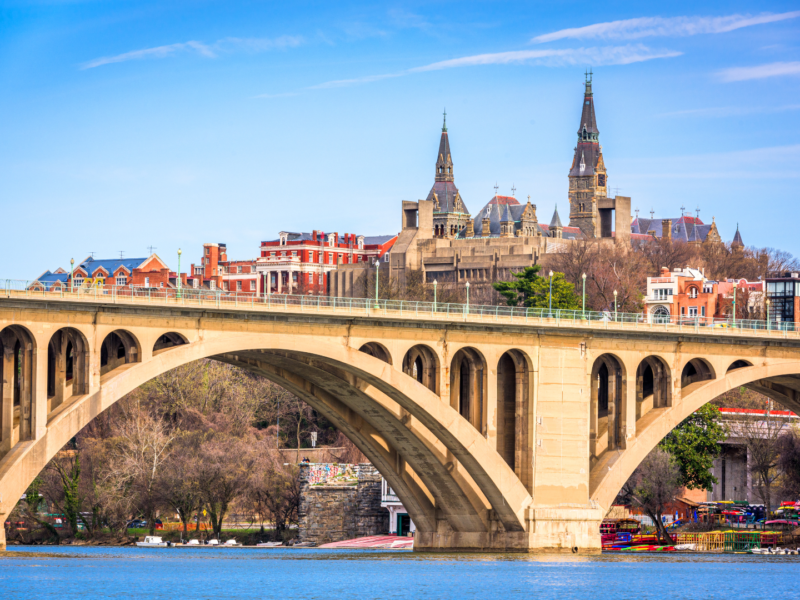In the heart of America’s political landscape lies a treasure trove of history, art, and architecture. The capital city boasts an impressive array of iconic monuments, memorials, and institutions that not only capture the essence of American history but also serve as a testament to the resilience and determination of its people.
From the stately Capitol building to the hallowed grounds of the National Mall, these famous landmarks in Washington, DC invite visitors from across the globe to immerse themselves in the rich tapestry of America’s past. In this article, we’ll highlight some of the most renowned attractions that Washington DC has to offer. So, whether you’re planning a trip to the nation’s capital or simply wanting to learn more about its fascinating landmarks, you’ve come to the right place.
The White House
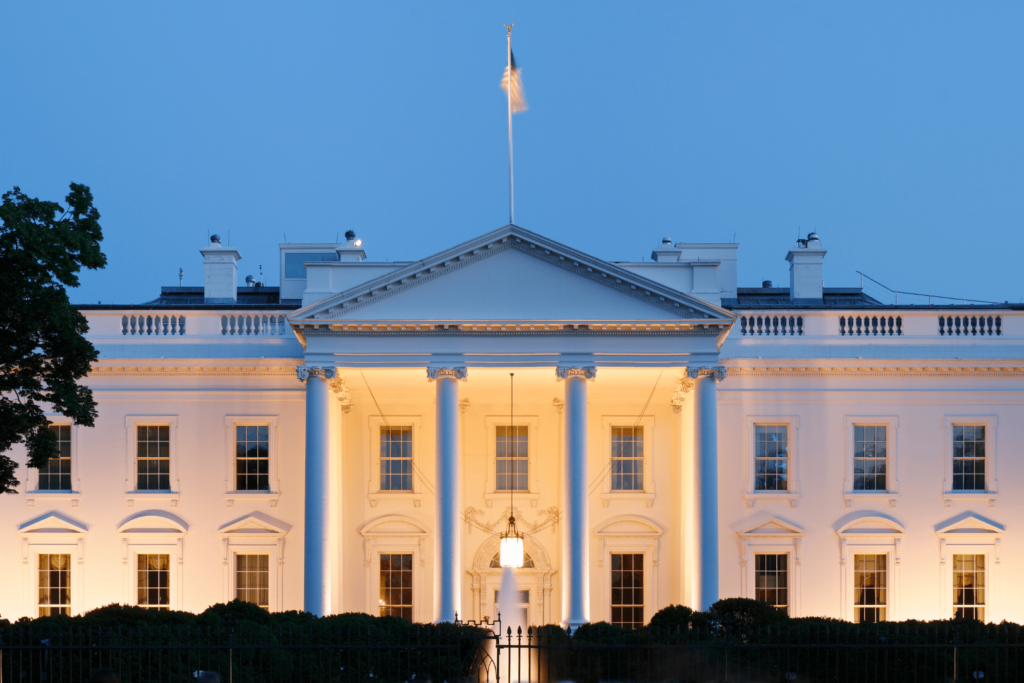
The White House is undoubtedly one of the most famous landmarks in Washington, D.C. This iconic building is not only the official residence of every U.S. president but also serves as a powerful symbol of the country’s democracy and its government.
Its beautiful architecture, history, and significance have captured the world’s attention for centuries, making it an attraction that cannot be missed. People from all over the world come to see this iconic landmark, and it is no wonder why – the White House stands tall as a representation of the power and history of the United States of America.
The United States Capitol Building
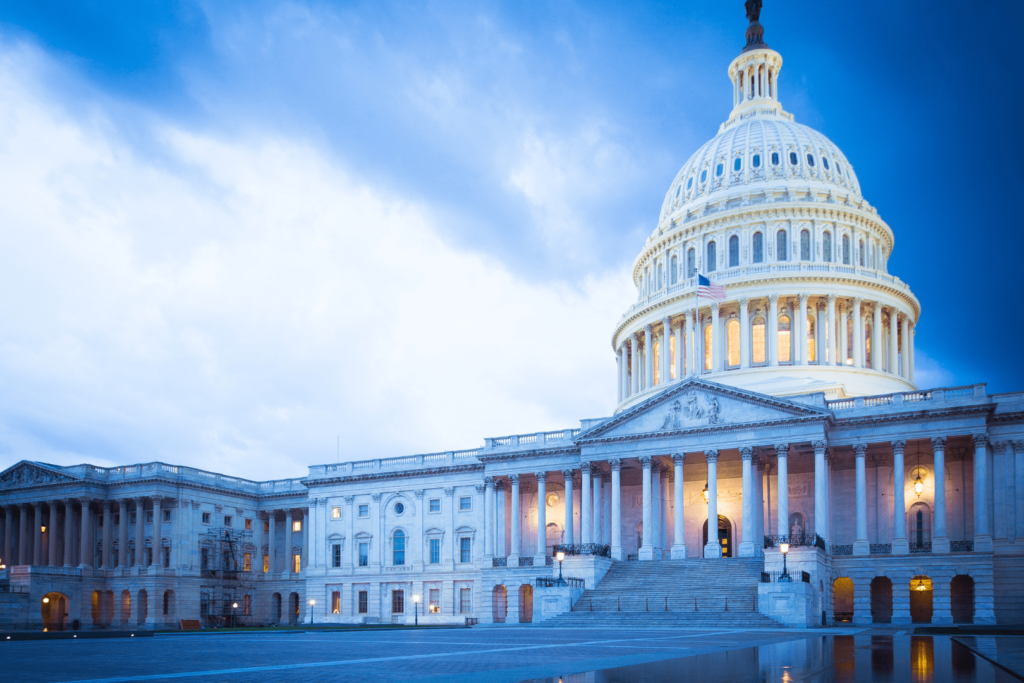
The United States Capitol Building is another famous landmark in Washington, DC. It is well-known as the meeting place of the United States Congress and the place where presidents give their annual State of the Union addresses.
The Capitol is also a symbol of American democracy, and its magnificent white dome is recognized worldwide as an icon of the American people and government. The design of the Capitol draws heavily from other landmark buildings, especially churches in Europe. It is an impressive sight to see and an important symbol of American democracy.
The Washington Monument
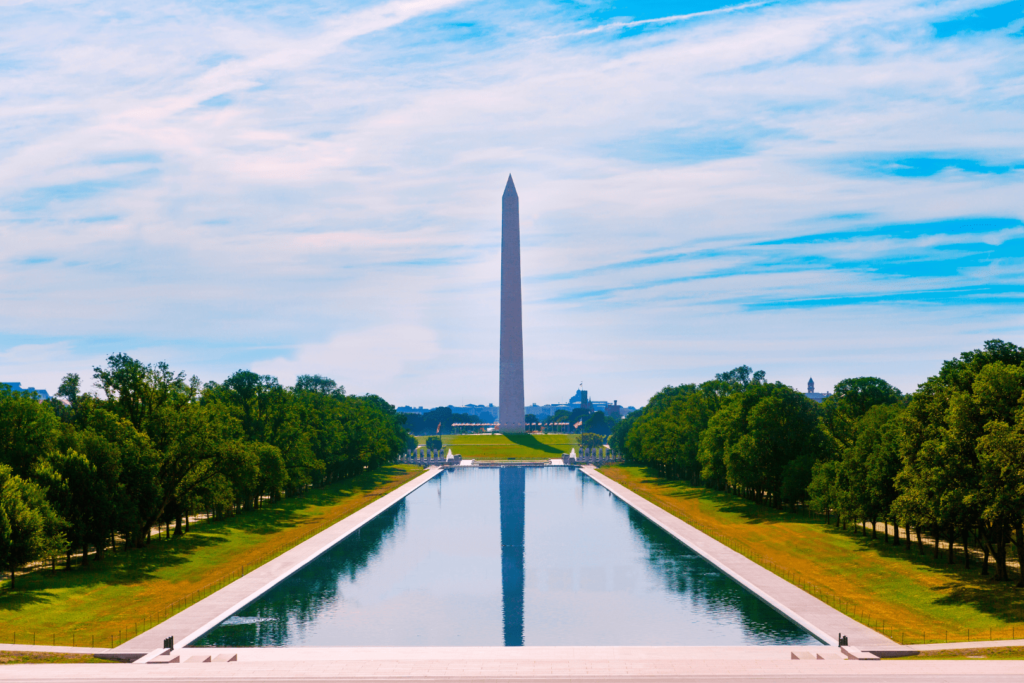
The Washington Monument stands tall and proud as a testament to George Washington’s contribution to the founding of America. This obelisk-shaped building, soaring to a height of 555 feet, is a famous landmark in Washington, D.C. It evokes the awe and respect for ancient civilizations and serves as an iconic symbol of the nation’s capital. Visitors from across the globe flock to the National Mall to marvel at the monument’s grandeur and take in its beautiful views.
The Lincoln Memorial
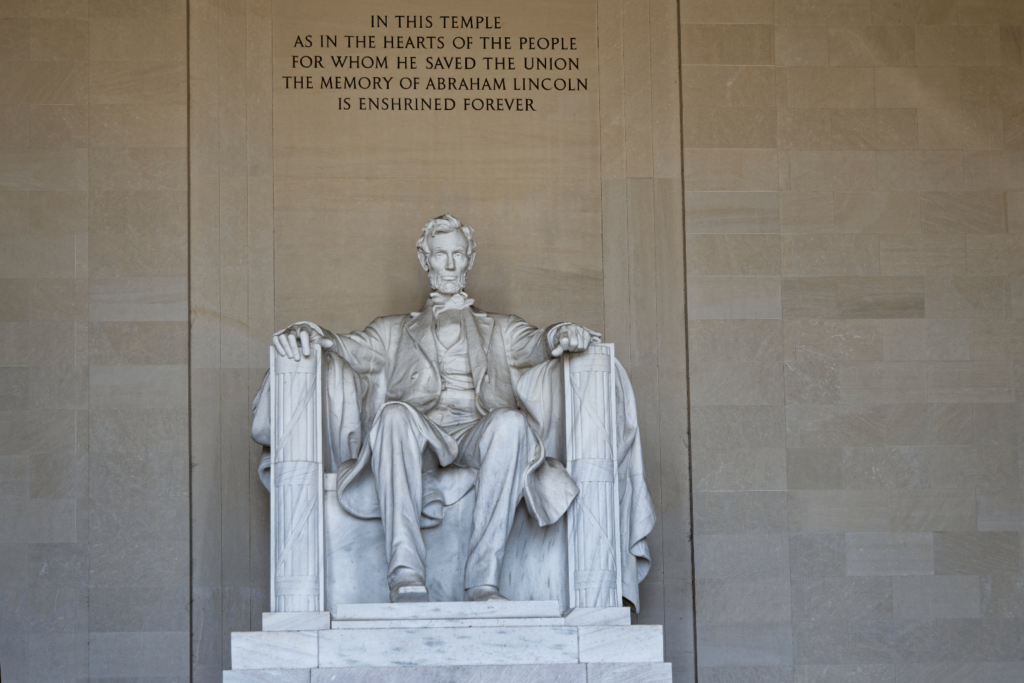
The Lincoln Memorial is another famous landmark in Washington, D.C. that is beloved by Americans and visitors from around the world. The stunning neoclassical monument was built to honor the 16th President of the United States, Abraham Lincoln, and his legacy of ending slavery.
The 36 Doric columns encircling its exterior symbolizes the number of states that comprised the Union during the time of Lincoln’s passing, paying tribute to the nation’s unity. The Memorial is a symbol of tolerance and healing after the Civil War.
On May 30, 1922, the Memorial was unveiled to the public and dedicated in front of a large, segregated crowd. Today, the Lincoln Memorial is one of the most revered national monuments in America and serves as a reminder of the virtues of freedom and democracy.
The Jefferson Memorial
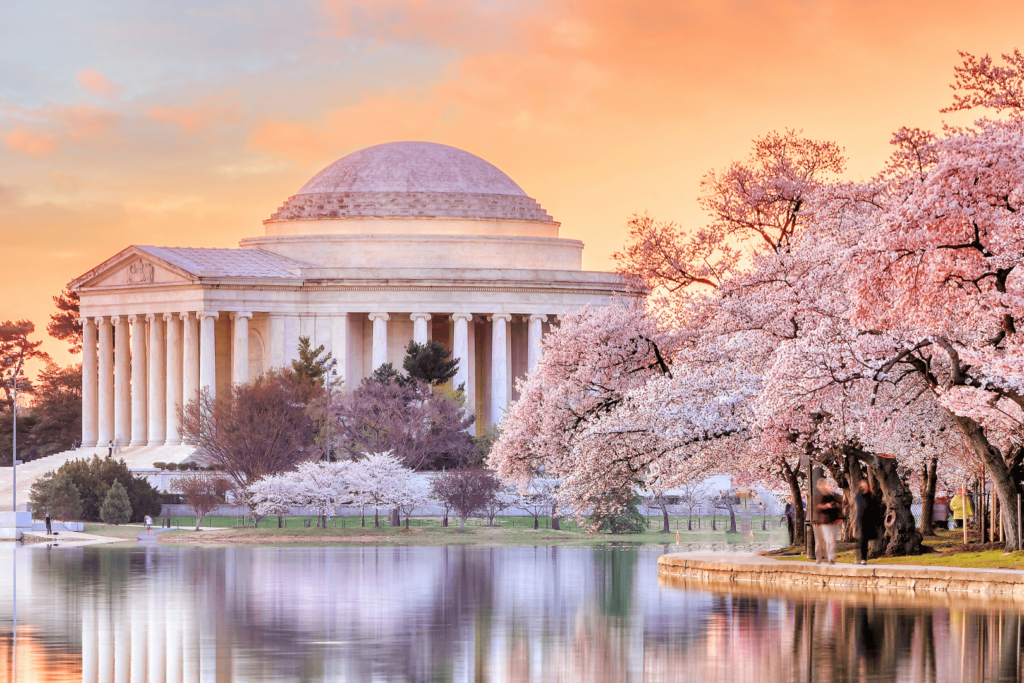
The Jefferson Memorial has enthralled millions of visitors with its rich history and unmatched beauty. Situated in West Potomac Park, the monument is located on the shore of the Potomac River’s Tidal Basin, occupying 18 acres (7 hectares) of spectacular massed plantings.
The memorial’s elegant classical serenity, reflected in the Tidal Basin and framed by ornamental Japanese cherry trees, is an inspiring sight to behold, especially during peak bloom. The dome-shaped rotunda, enclosing a 19-foot bronze statue of Thomas Jefferson, honors him for co-writing the Declaration of Independence, shaping the country’s foreign policy, and was the country’s third president.
The statue holds the declaration of independence, a nod to his significant achievement. The Jefferson Memorial is a fitting monument to a man who was a member of the Virginia Colonial Assembly, delegate to the 1st Continental, and inspired by his love for classic architecture.
The National Mall
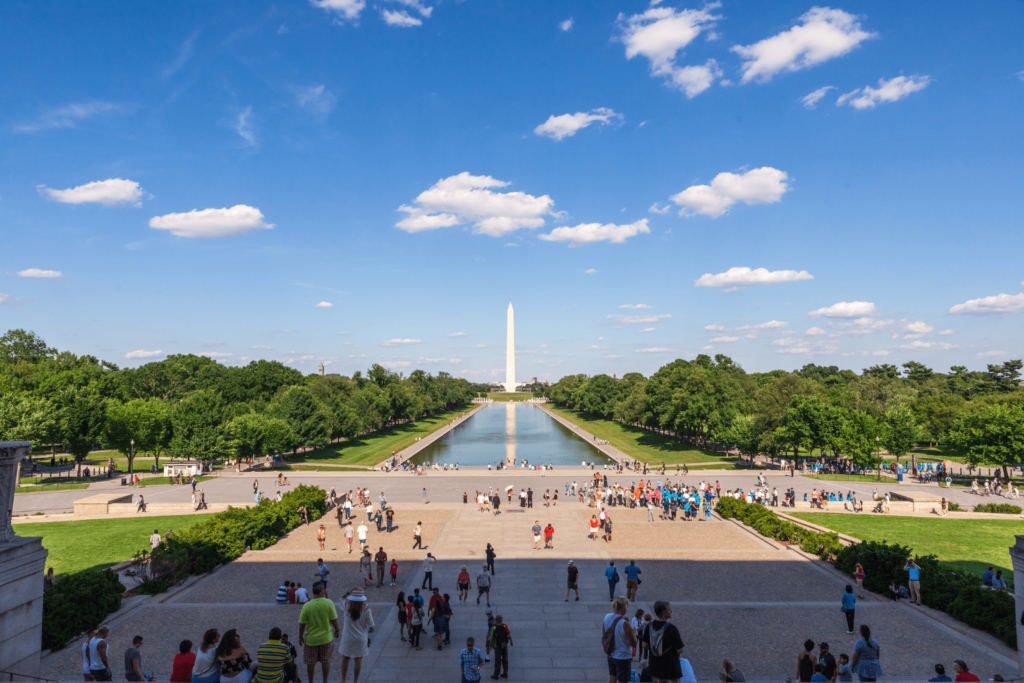
The National Mall is a popular landmark in Washington, D.C. that attracts over 24 million visitors each year. This vast, T-shaped complex is made up of several parks, monuments, and museums that showcase the rich history and culture of the United States.
It is often referred to as “America’s front yard” and is home to some of the most iconic monuments and memorials, including the Lincoln Memorial, Washington Monument, and Vietnam Veterans Memorial. The National Mall also houses some of the most famous museums and galleries in the country, making it a hub for both nature and culture.
With its grand promenade and greensward extending westward from the Capitol to the Potomac, the National Mall truly is a symbol of American heritage and a must-see destination when visiting D.C.
The Smithsonian Institution Building
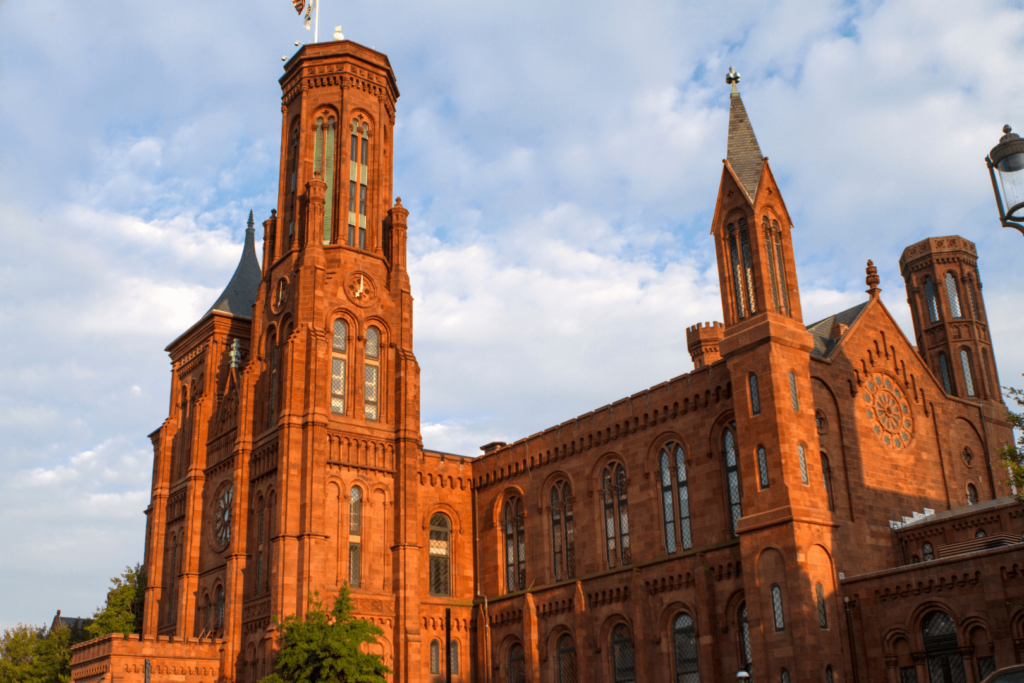
The Smithsonian Institution Building, affectionately known as the Smithsonian Castle, is a well-known and beloved landmark in Washington D.C. Constructed in the Norman style in the mid-19th century with red sandstone from Seneca Creek, Maryland, the building stands out as a gorgeous example of 12th-century architecture, showcasing a combination of late Romanesque and early Gothic elements.
Originally functioning as both the residence and workplace for Joseph Henry, the first Secretary of the Smithsonian, the Castle played a pivotal role in the institution’s early days. Up until 1881, this historical building accommodated a wide range of Smithsonian operations, consolidating research and administrative offices, lecture halls, exhibit spaces, a library and reading room, and chemical laboratories all under one roof. Furthermore, the Castle provided living quarters not only for the Secretary and his family but also for visiting scientists.
The Smithsonian Castle’s importance lies in its history, as it has served the Smithsonian Institution in many capacities and has been a part of the National Mall since its construction. On February 1, 2023, the Castle closed its doors to embark on its first significant renovation in over 50 years. While the physical location may be temporarily inaccessible, the Smithsonian experience remains alive and well through the Virtual Visitor Center.
The National Archives Building
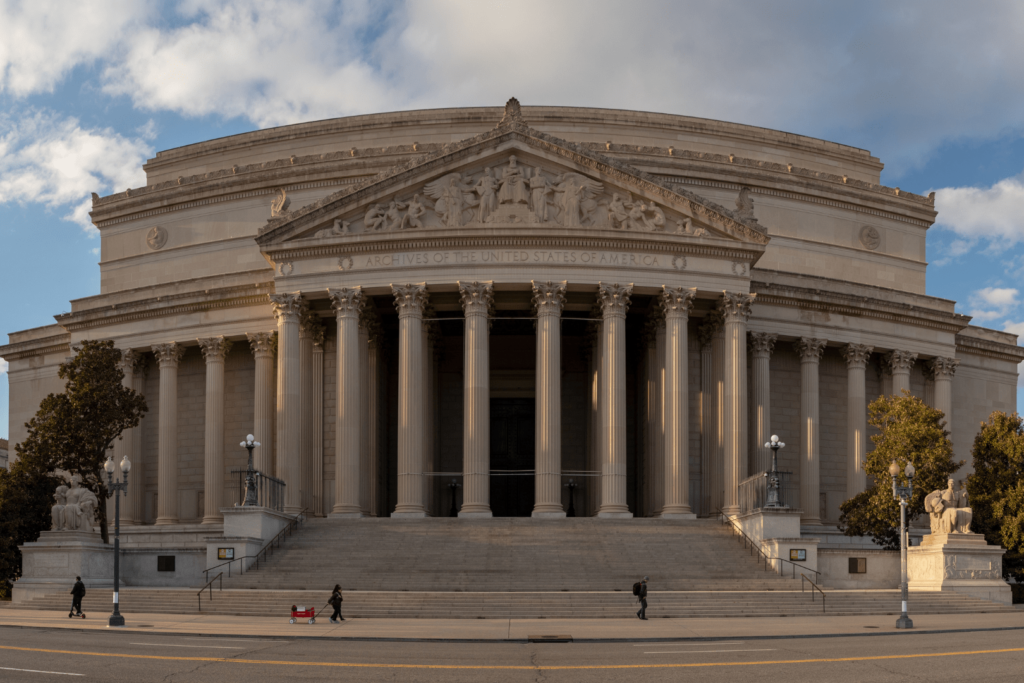
The National Archives Building houses some of the most important documents in American history, including the Declaration of Independence, the Constitution, and the Bill of Rights. The building was designed by the renowned architect John Russell Pope and is considered a temple to history.
Although it was more challenging to design than other government buildings due to its unique purpose, the end result was a magnificent structure that showcases the importance of preserving historical documents.
Visitors to the National Archives Museum can view exhibits of historical records and presidential papers, as well as visit the Rotunda to see the founding documents on display. The building’s historical significance dates back to its inception in 1931 and continues to the present day, as it preserves the Constitution and other essential documents.
The Franklin Delano Roosevelt Memorial
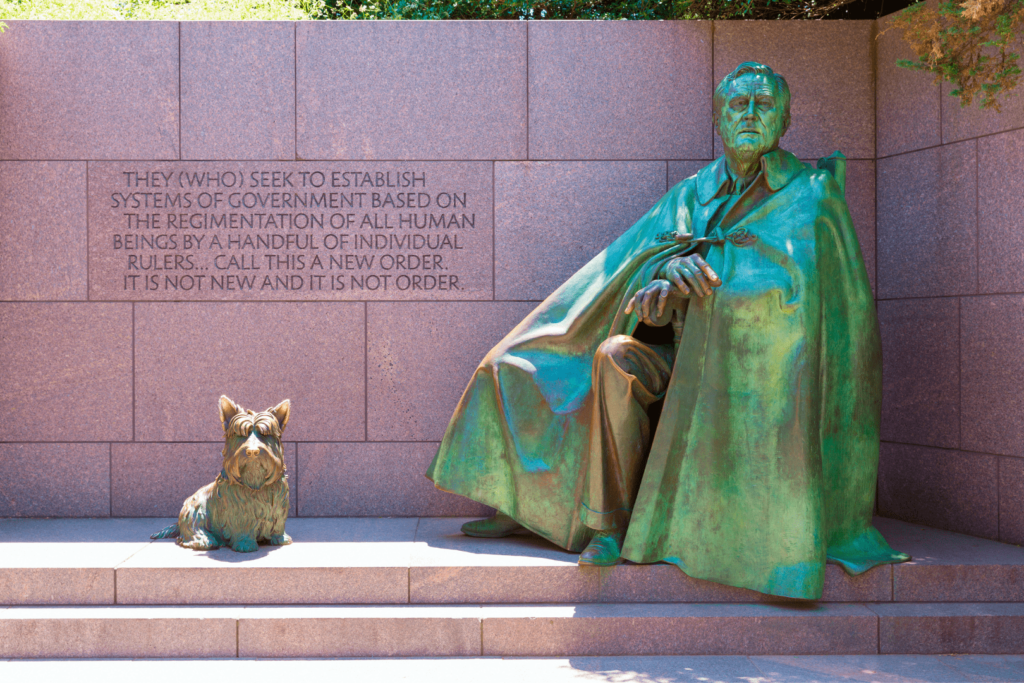
The Franklin Delano Roosevelt Memorial is one of the most famous landmarks in Washington D.C. and for good reason. The memorial pays tribute to FDR, the 32nd president of the United States, who led the country through some of its darkest times.
Built from South Dakota granite and punctuated by beautiful waterfalls, alcoves, and flowering cherry trees, the monument is a stunning sight to behold. Visitors can explore four rooms that cover FDR’s four terms of office through monuments, sculptures, and water displays that portray the symbolism of his contribution to America.
As the only president elected more than two times, the memorial is one of the largest of all the presidential monuments and brings many visitors every year. The Franklin Delano Roosevelt Memorial is a fitting tribute to an extraordinary president who played a crucial role in shaping America’s history.
The Vietnam Veterans Memorial
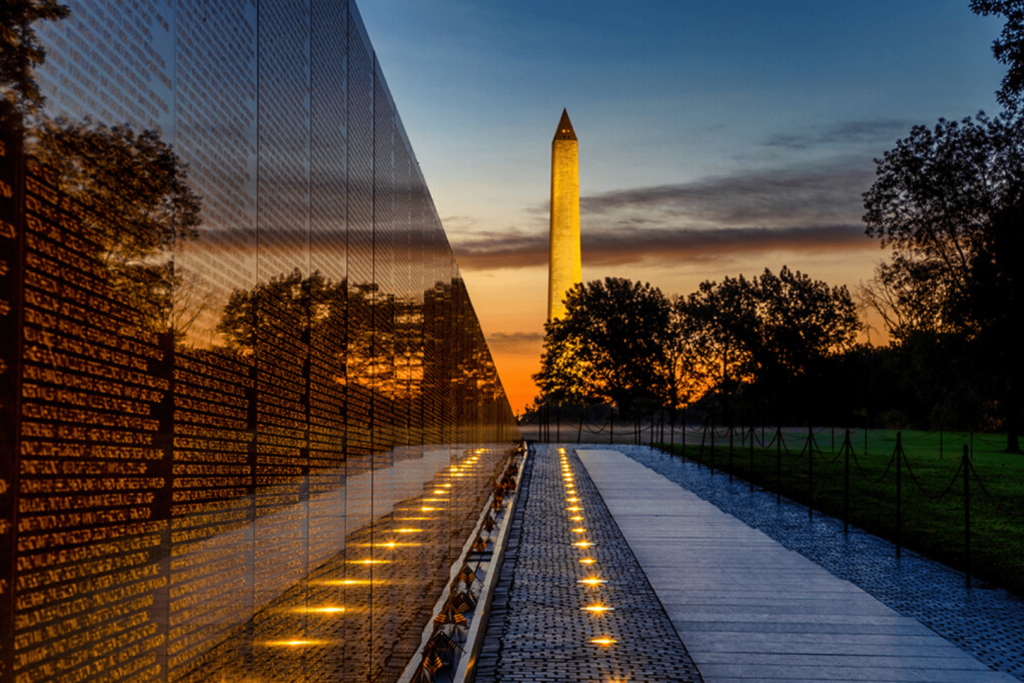
The Vietnam Veterans Memorial honors the members of the United States Armed Forces who served and died in the Vietnam War. The memorial, also known as “The Wall,” consists of “a 247-foot long “V” composed of two walls that meet at a 125-degree angle.” Maya Lin, the 21-year-old designer, created a revolutionary minimalist design that stands out among the classic, white-marble monuments on the National Mall.
The memorial’s list of soldiers lost in the war, more than 58,000 names carved into black granite, foregrounds not the valor of combat, but the toll of it. The Vietnam Veterans Memorial is a solemn reminder of the sacrifices made by American servicemen and women in one of the most divisive conflicts in American history.
The Martin Luther King Jr. Memorial
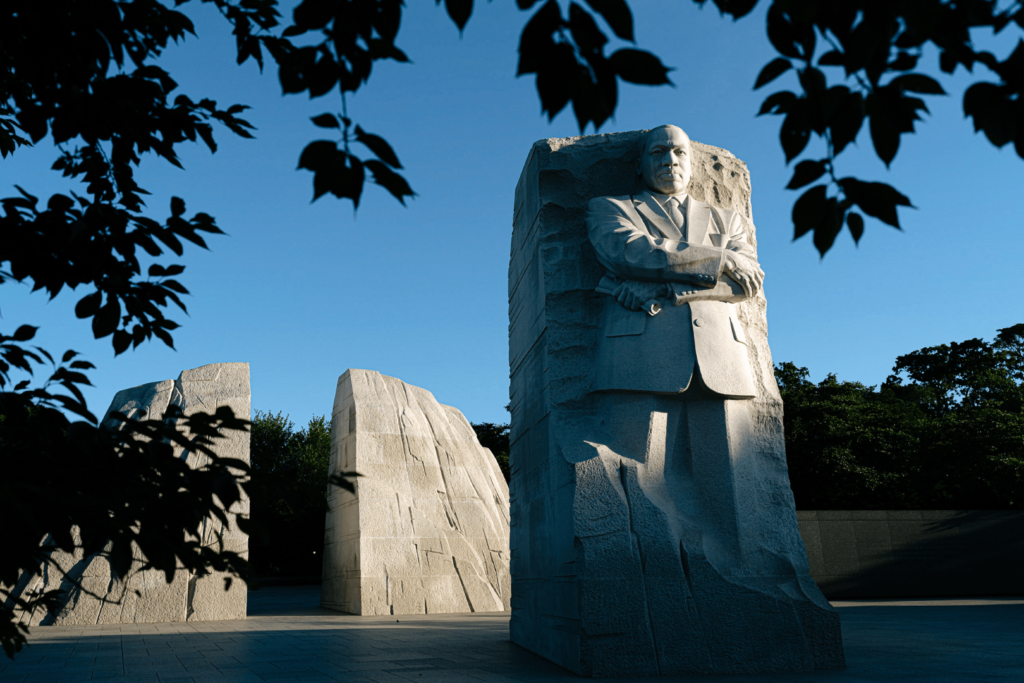
The Martin Luther King, Jr. Memorial is an iconic landmark in Washington, D.C. that pays tribute to the remarkable journey of this great civil rights activist. The stunning monument, located in West Potomac Park beside the National Mall, is a place of inspiration and hope.
The Stone of Hope, the centerpiece of the memorial, is a 30-foot statue of Dr. King that depicts his famous “I Have a Dream” speech, one of the most significant moments in American history. It represents King’s unwavering dedication to democracy, justice, and human rights.
This national treasure stands as a lasting tribute to Dr. King’s legacy and serves as a constant reminder of the struggle for freedom and equality that he fought for throughout his life. The memorial is a must-visit for those who want to learn more about the incredible journey of a man who changed the course of history.
The Korean War Veterans Memorial
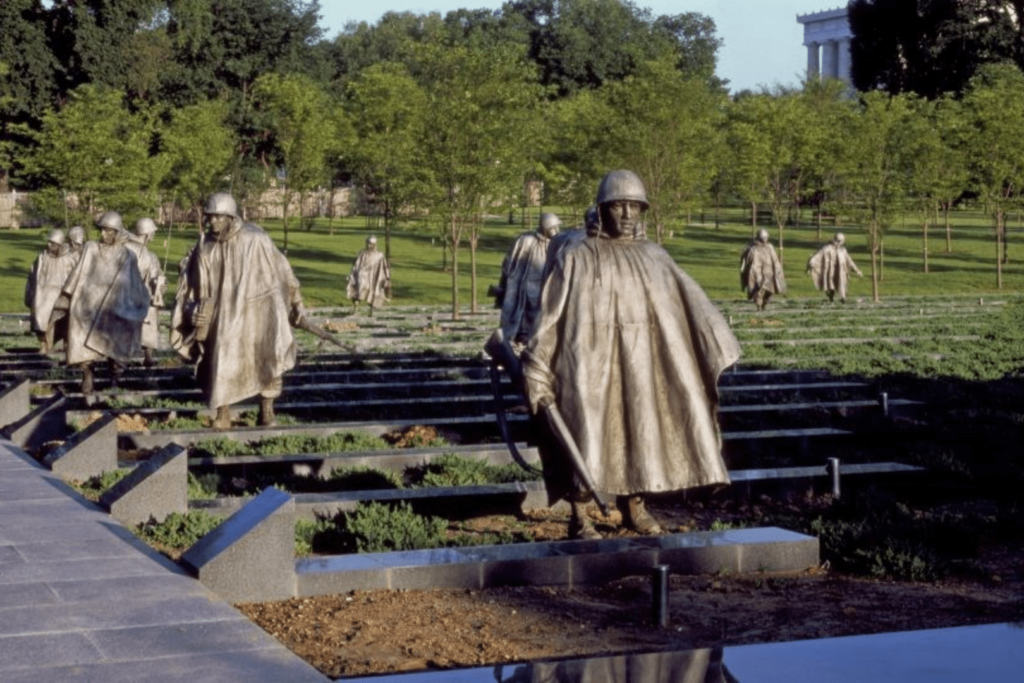
The Korean War Veterans Memorial opened on July 27, 1995, and is located in West Potomac Park, just south of the Reflecting Pool and southeast of the Lincoln Memorial. The monument pays tribute to the brave men and women who served in the Korean War between 1950 and 1953.
Visitors to the memorial can appreciate the various symbols that represent the mountainous terrain, such as the uphill walking area. The 19 stainless steel sculptures comprising the mural represent the different branches of the U.S. military that served in the conflict.
The number 38 holds great significance as it not only represents the 38th parallel of latitude, which was chosen by the US and USSR as the dividing line for their military occupation of the Korean peninsula, but also the 38 months of intense fighting that took place during the conflict. Additionally, the monument honors not only Americans but also 22 other nations that participated in the Korean War.
The National World War II Memorial
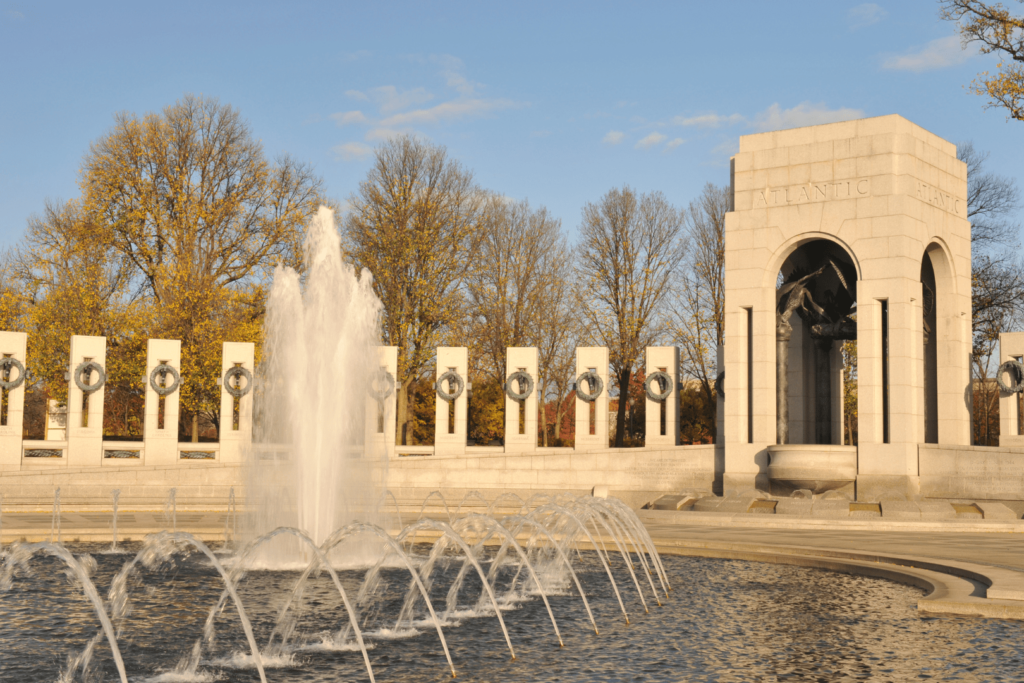
The National World War II Memorial is a famous landmark due to its significance in honoring the service and sacrifice of millions of Americans during World War II. The memorial is located in a prime spot on the National Mall between the Washington Monument and the Lincoln Memorial, making it a prominent site for visitors to see.
It is a symbol of the spirit, sacrifice, and commitment of the American people during one of the defining events of the 20th century. The memorial also pays tribute to the 405,399 Americans who made the ultimate sacrifice during the war.
Its location in the middle of the Reflecting Pool and Washington Monument adds to its grandeur and beauty, making it a popular destination for tourists visiting the nation’s capital.
The United States Supreme Court Building
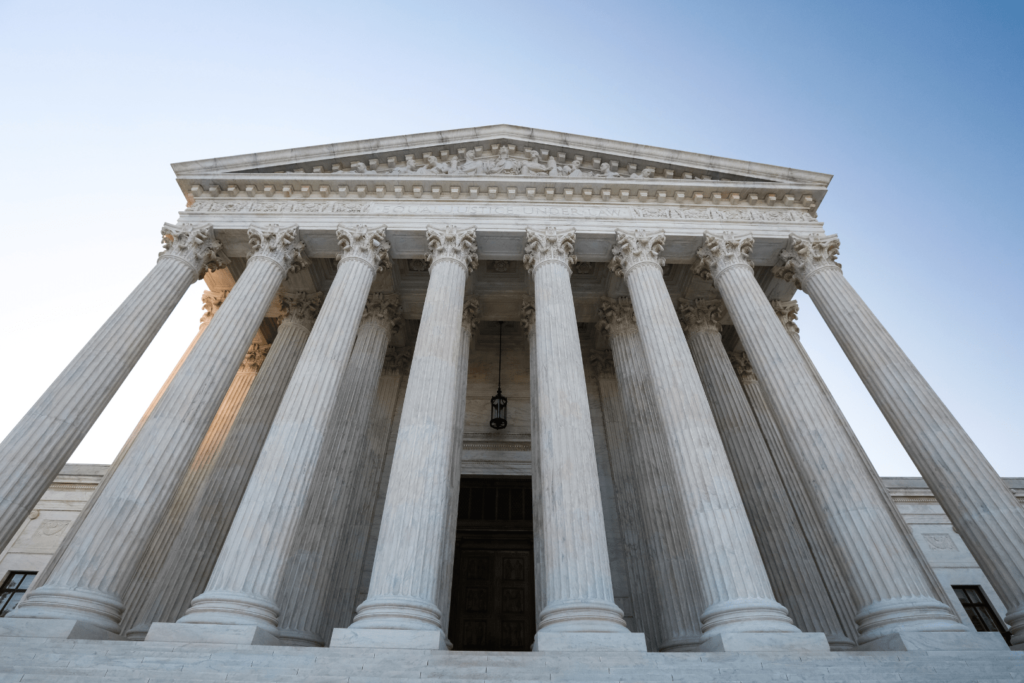
The U.S. Supreme Court building is also a famous landmark in Washington, DC. Visitors can admire the grandeur of the marble columns, sculptures, and murals. The building is a true representation of democracy and justice, reflecting the Judiciary’s vital role in the United States government.
It has been the site of important cases throughout history, from civil rights to presidential elections, and has hosted numerous famous justices who have shaped American law. The Supreme Court Building is not only admired for its architectural beauty but also for its significance in preserving democracy and upholding justice.
The Library of Congress
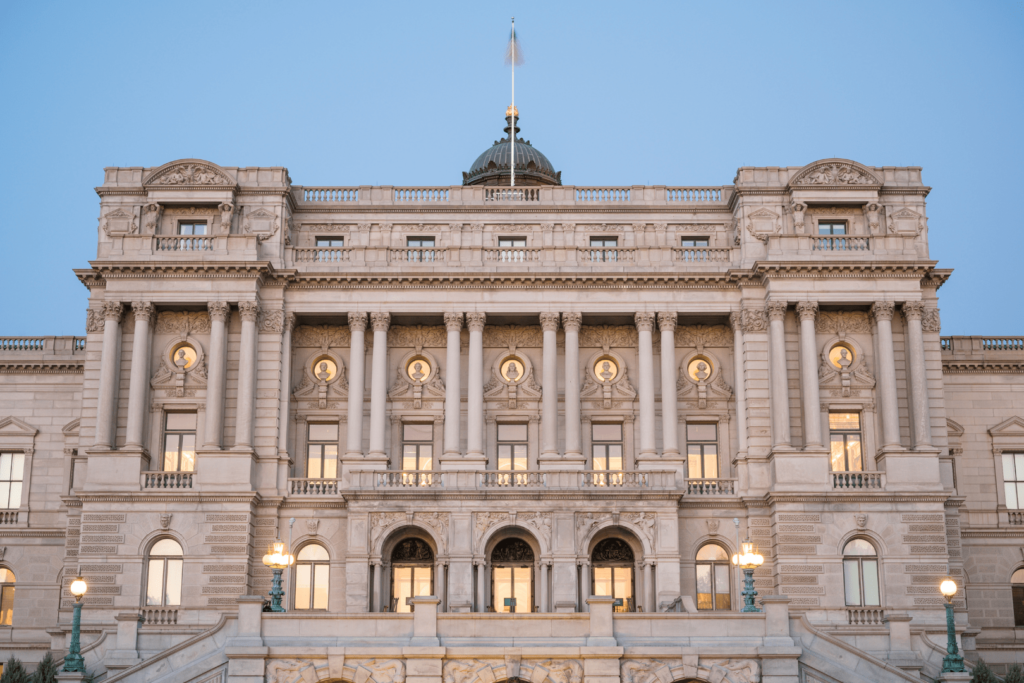
The Library of Congress is a famous landmark in Washington, D.C. due to its rich history, stunning architecture, and importance in American culture. The library was established in 1800 and was originally housed in the U.S. Capitol building.
However, when the Capitol was burned in 1814, all of the books were destroyed, prompting former President Thomas Jefferson to offer his personal collection to replenish the collection. The library officially became the Library of Congress in 1862 and is now the largest library in the world, with over 38 million books, documents, and manuscripts.
The Jefferson Building, the oldest of the four Library of Congress buildings, is a stunning example of Beaux-Arts style architecture and is a popular tourist attraction in its own right. As the official library of the U.S. Congress, the Library of Congress serves as a national library and is a valuable resource for academic researchers, historians, and the public alike.
The Bureau of Engraving and Printing
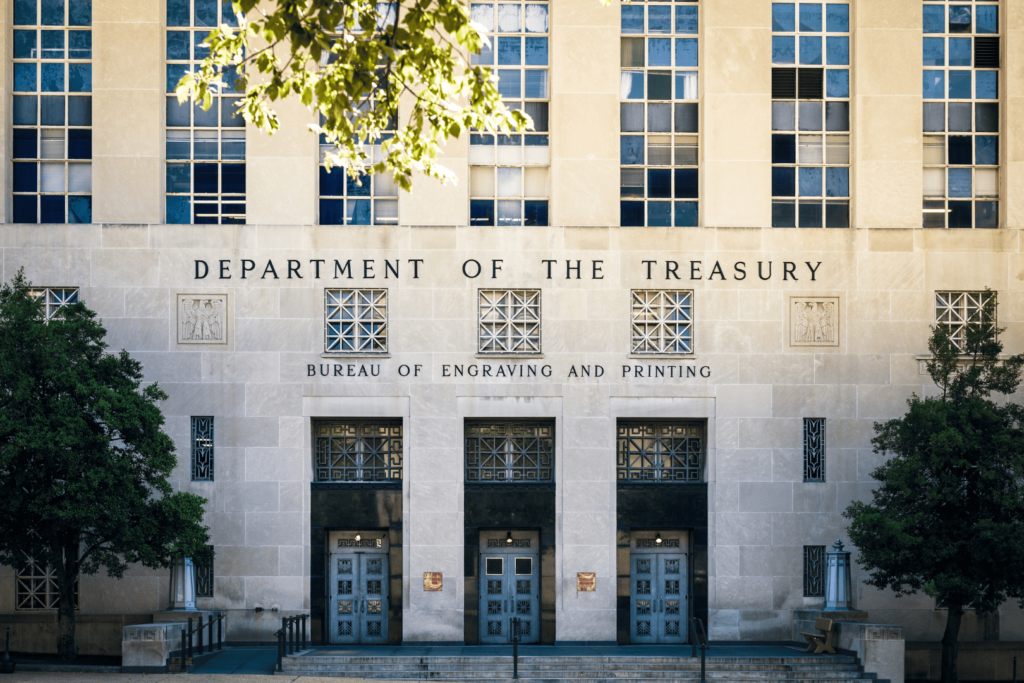
The Bureau of Engraving and Printing (BEP) is another famous landmark in Washington, D.C. due to its crucial role in producing U.S. paper currency and other important documents. Its location in the heart of the Nation’s capital makes it a must-see attraction for tourists visiting the city.
Visitors can take a guided tour during operating hours to learn about the Bureau and it’s functions, and the process of printing American currency. Currently the BEP is closed to visitors. Please stay updated on its reopening status and any relevant information for future planning.
In conclusion, while this article offers a glimpse into the wonders of some famous landmarks in Washington DC, it is important to remember that these highlights represent only a fraction of the capital’s myriad attractions. The city is brimming with historical, cultural, and architectural gems that capture the essence of America’s rich heritage.

“Traveling is the art of collecting stories, not just souvenirs.”
